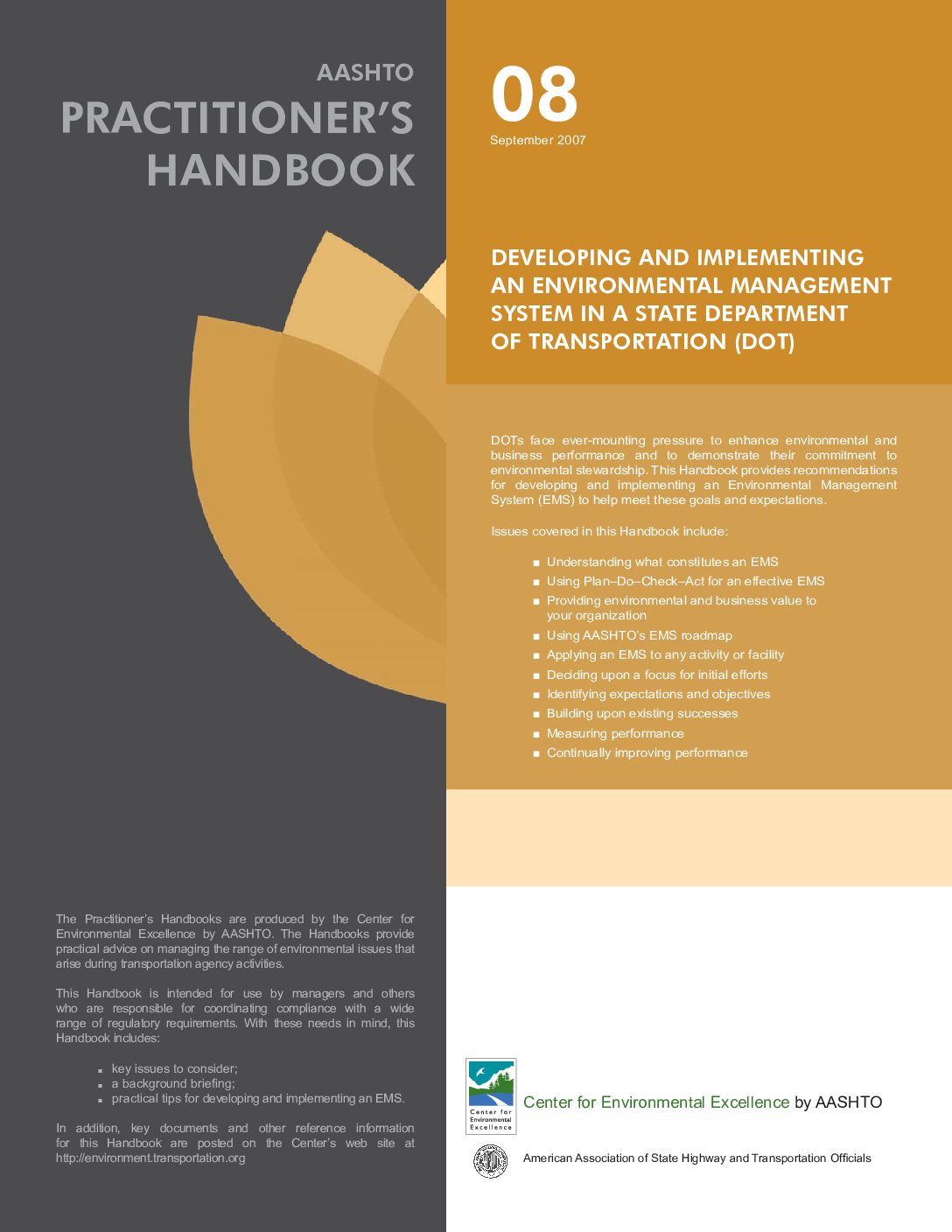Developing and Implementing an Environmental Management System in a State DOT
Home » Resources & Research » Practitioner’s Handbooks » Developing and Implementing an Environmental Management System in a State DOT

Developing and Implementing an Environmental Management System in a State DOT
DOTs face ever-mounting pressure to enhance environmental and business performance and to demonstrate their commitment to environmental stewardship. This Handbook provides recommendations for developing and implementing an Environmental Management System (EMS) to help meet these goals and expectations.
Issues covered include: understanding what constitutes an EMS, using Plan-Do-Check-Act, providing environmental and business value to your organization, using AASHTO’s EMS roadmap, applying an EMS to any activity or facility, deciding upon a focus for initial efforts, identifying expectations and objectives, building upon existing successes, measuring performance, and continually improving performance.
Handbook Resources
EMS templates, directives, tools, modules, and fact sheets available through the Office of the Federal Environmental Executive
http://www.ofee.gov/
Strengthening Federal Environmental, Energy, and Transportation Management, Executive Order 13423, January 24, 2007
http://www.ofee.gov/
Instructions for Implementing Executive Order 13423, March 29, 2007
http://www.ofee.gov/eo/eo13423_instructions.pdf
Environmental Information Management and Decision Support System for Transportation: The Results of National Cooperative Highway Research Program (NCHRP) 25-23, Center for Transportation and the Environment (CTE) National Broadcast Series, June 24, 2004
http://itre.ncsu.edu/CTE/TechTransfer/Teleconferences/docs/tc30handout.pdf
AASHTO’s Practitioner’s Handbook 04, Tracking Compliance with Environmental Commitments/Use of Environmental Monitors (November 2006) – “A system for tracking environmental commitments made in the NEPA process could be implemented as part of an EMS.”
View Handbook
EPA-330/9-97-002R, Compliance-Focused Environmental Management System – Enforcement Agreement Guidance (June 2005), Provides “…particular emphasis on adopting EMSs to achieve improved environmental performance, including compliance, pollution prevention, and continual improvement in all areas, regulated and unregulated.” Compliance agreements for several DOTs require EMSs.
http://www.epa.gov/Compliance/resources/policies/neic/cfems_05.pdf
FHWA’s Successes in Stewardship, Monthly Newsletter (May 2006) – “…EMS can better equip agencies with the information, resources, strategy, and feedback they need to improve their performance and reduce their environmental impact.”
http://environment.fhwa.dot.gov/strmlng/newsletters/may06nl.asp